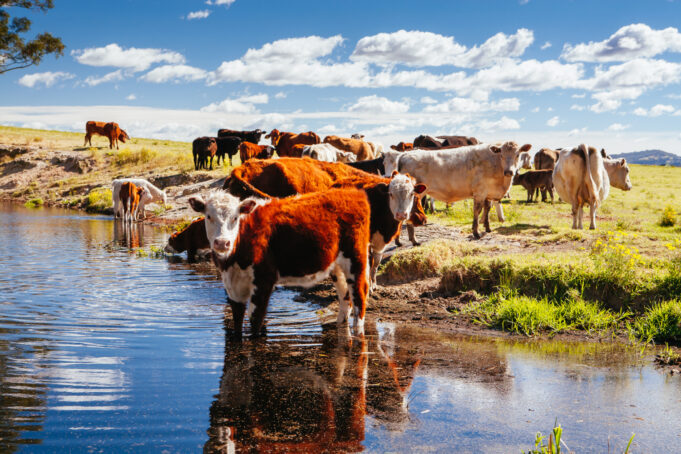A new report from the Environmental Working Group is sounding alarms on a long-brewing but now unavoidable crisis. According to data from nearly 6,000 water systems, manure from industrial livestock farms is fueling the formation of carcinogenic disinfection byproducts (DBPs) in treated drinking water. And utilities are caught in the crossfire. Water Treatment 411 dives into the implications for water utilities and operators.
A Familiar Threat, Now With a Manure Pipeline
Most water treatment professionals know trihalomethanes (TTHMs) all too well. These common DBPs are byproducts of the chlorination process when organic matter is present. What’s less commonly highlighted is the scale of organic loading now being driven by manure runoff from concentrated animal feeding operations (CAFOs). The EWG’s analysis, which covers testing from 2019 to 2023, ties manure-laden watersheds to spikes in TTHM levels well above EPA’s 80 ppb limit. In some systems, concentrations tripled that threshold.
The implication: Even when utilities comply with standard disinfection protocols, they’re still ending up with regulated carcinogens in the distribution system, thanks to source water conditions they can’t fully control.
A Widespread Problem
Over 122 million Americans were served by systems that exceeded safe TTHM thresholds at least once in the four-year study period. The geographic spread is nearly national, covering 49 states and Washington, D.C., but the hotspots align with major livestock production zones. Texas, California, Florida, and North Carolina top the list, with Texas alone logging over 700 systems in violation.
This data turns a regulatory problem into an operational one. Compliance no longer hinges solely on plant performance but increasingly on upstream land use. Treatment professionals must now factor agricultural runoff into both process design and long-term capital planning.
The Treatment Tech Catch-Up Game
If your utility isn’t yet exploring granular activated carbon (GAC) or reverse osmosis (RO) as a safeguard against organic precursors, it may be time. The report recommends these as essential upgrades for systems at high risk of manure-induced organic loading. That’s especially critical in rural systems near CAFOs, where runoff infiltration and surface water impacts are most direct.
But GAC and RO come at a steep cost, and many systems, particularly small and mid-size ones, don’t have the budgets to implement them without federal or state aid. Unfortunately, the same report notes that billions in federal conservation funding have recently been frozen, limiting proactive watershed interventions like stream buffers or cover crops.
Beyond the Plant
The challenge doesn’t end at the intake. EWG calls for the EPA to enforce tighter controls on manure management, including restrictions on land application near water sources. While this is outside the direct purview of water treatment operations, it’s worth engaging in those policy conversations. More aggressive runoff regulation could significantly reduce precursor load and give utilities a fighting chance to reduce TTHMs without overhauling infrastructure.
Utilities may also want to advocate for conservation funding reforms. When agricultural runoff becomes a drinking water contaminant, source protection is a public health imperative.
What Utilities and Operators Can Do
Tackling disinfection byproduct contamination linked to manure runoff will require more than reactive treatment. Utilities need a proactive, watershed-wide approach that combines monitoring, planning, advocacy, and funding strategies. Here’s where to start:
- Monitor for organic loading year-round, especially during rainy seasons and near agricultural operations.
- Upgrade source water assessments to include manure management patterns in the watershed.
- Advocate for local runoff regulations that limit manure application near surface water intakes.
- Push for funding not just for treatment upgrades, but for upstream conservation efforts that reduce the need for treatment in the first place.
Disinfection byproducts aren’t a new problem. But the scale and severity tied to manure runoff elevates this from a compliance nuance to a system-wide challenge. Treatment plants are now expected to solve problems that begin far upstream. If water professionals aren’t at the table when agricultural policy is shaped, they’ll be left holding the bag (and the liability) when contamination hits.
SOURCES: Environmental Working Group





